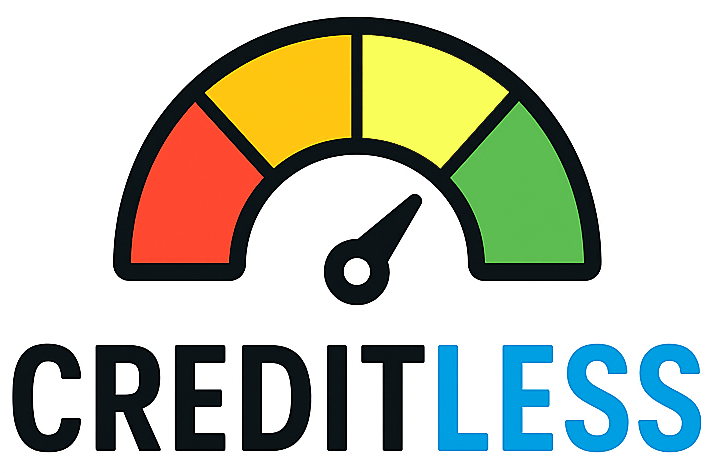What is a credit‑builder loan — and why use one?
A credit‑builder loan is a small installment loan designed specifically to establish or improve your credit history. Instead of receiving funds up front, the lender typically places the loan proceeds into a secured or locked savings account or certificate; you make fixed monthly payments for the loan term and the lender reports those on‑time payments to the credit bureaus. When the loan is repaid, you get access to the saved funds (minus any fees or interest) — and you hopefully also have a stronger credit file.
These products are aimed at people who are “credit invisible” (no score) or who have very thin or poor credit and need reliable, reported payment history to qualify for better loans and credit cards in the future. They’re offered by credit unions, community banks and an increasing number of fintech platforms and apps.
How they work — step by step
- Apply: You apply for a small loan (often $300–$2,000, depending on the lender and program).
- Funds held: The lender places the loan amount into a locked savings/CD or escrow account — you don’t get the money immediately.
- Make payments: You make monthly payments (principal + interest/fees) for the term (commonly 6–24 months). Each on‑time payment is reported as an installment payment to the credit bureaus.
- Funds released: After you finish the payments, the lender releases the funds (and sometimes any accrued interest) to you.
Terms and structures vary: some traditional credit unions offer low APRs and hold the proceeds in a share/savings account, while many fintech products use subscription or administrative fees rather than a conventional APR. Always confirm whether the lender reports to all three major bureaus (Experian, TransUnion and Equifax), because reporting is the mechanism that affects your score.
Costs, providers, and important risks
Costs vary widely between providers:
- Traditional credit unions / community banks: tend to offer fixed, relatively low APRs (sometimes priced as share‑rate plus a small margin), and no monthly subscription fees. Example terms often range from 12–24 months for small principal amounts.
- Fintech apps: many advertise no hard credit check and low up‑front barriers, but they frequently charge monthly subscription/administrative fees (or higher service fees) rather than a low APR. These fees can add up and should be compared to the interest you’d pay in a credit‑union program.
Key risks and tradeoffs:
- Missing payments will be reported as late and can harm your credit — in some CFPB research credit‑builder loans increased delinquency on other accounts for borrowers who already had debt. For some borrowers with existing loans, a CBL produced worse credit outcomes. Pay only if you’re confident you can afford the extra monthly payment.
- You don’t get immediate access to the money — these are credit‑building tools, not emergency funds.
- Fees and the effective cost to build credit vary: a fintech subscription that costs $9–$20/month may be comparable to a low APR depending on term and loan size — run the math before you commit.
What score gains can you expect — realistic examples and evidence
Results vary greatly by borrower. The Consumer Financial Protection Bureau’s randomized evaluation (one of the largest studies) found that a credit‑builder loan helped people without existing debt most: borrowers who had no outstanding loans were substantially more likely to obtain a credit score after taking a CBL, and among those without existing debt, scores improved markedly (the CFPB reported a roughly 60‑point higher increase versus participants with existing debt). The same study found the program increased participants’ savings on average (about $253), but it also flagged elevated late‑payment risks for some borrowers.
Other lender and fintech reports advertise shorter‑term bumps (dozens of points in several months) when payments are timely and when the borrower had a very thin file to begin with. However, there is no guaranteed or universal point increase — your starting score, mix of accounts, existing debts, and whether the lender reports to multiple bureaus all matter.
Who benefits most?
- People with no credit score or very thin files (credit invisibles).
- Those with limited existing debt who can comfortably add one small monthly payment.
Who should be cautious?
- People already stretched by existing monthly loan obligations — adding another payment can increase missed‑payment risk and sometimes worsen scores, per CFPB findings.
- Consumers who need immediate cash — credit‑builder loans lock funds until payoff.
How to pick the right program — a short checklist
- Confirm reporting: ask the lender whether they report your payment history to Experian, TransUnion and Equifax (reporting to all three is ideal).
- Compare total cost: calculate total fees + interest over the full term and compare against other options (secured card, authorized user, rent reporting).
- Check the term and monthly payment: choose a term you can reliably afford every month.
- Read the fine print on access to funds and early payoff rules — paying off too early can shorten the reporting history and reduce score benefit in some cases.
- Consider alternatives: a secured credit card or rent/utility reporting may be better if you want ongoing access to credit lines or need to use credit immediately.
Bottom line: credit‑builder loans are a useful, evidence‑backed tool for people who need to establish a credit history and who can reliably make an extra monthly payment. They’re not free and they’re not risk‑free — choose a low‑cost, transparent program that reports to the bureaus you care about, and treat the loan as a commitment to on‑time payments. If you already carry several monthly loan obligations, talk to a nonprofit credit counselor or consider alternatives before adding a CBL.
